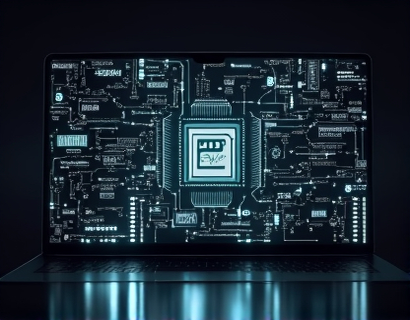Unlocking DeFi Potential: Master the Next-Gen Web3 Wallet for Seamless Crypto and Token Management
The landscape of finance is undergoing a transformative shift with the advent of decentralized finance or DeFi. At the heart of this revolution is the Web3 wallet, an innovative tool designed to empower users in managing their digital assets with unprecedented ease and security. This article delves into the intricacies of mastering the next-generation Web3 wallet, providing a comprehensive guide for cryptocurrency enthusiasts and DeFi users aiming to optimize their asset management in the dynamic world of decentralized finance.
Understanding Web3 Wallets
Web3 wallets represent a significant evolution in digital asset management, built on blockchain technology to offer a decentralized and secure environment for storing, accessing, and transacting cryptocurrencies and tokens. Unlike traditional wallets, Web3 wallets are not controlled by any central authority, ensuring that users maintain full sovereignty over their assets. This decentralized nature aligns perfectly with the principles of DeFi, fostering a more inclusive and transparent financial ecosystem.
Key Features of Advanced Web3 Wallets
To fully leverage the potential of DeFi, it's essential to understand the key features that distinguish advanced Web3 wallets. These wallets are equipped with a range of functionalities designed to simplify and secure digital asset management.
Firstly, multi-asset support is a cornerstone feature. Advanced Web3 wallets allow users to manage a diverse portfolio of cryptocurrencies and tokens from various blockchains, including Ethereum, Binance Smart Chain, Solana, and more. This versatility ensures that users can seamlessly interact with different assets without the need to switch between multiple wallets.
Secondly, enhanced security measures are paramount. These wallets employ cutting-edge cryptographic techniques and multi-signature protocols to safeguard user funds. Features like hardware-backed security and biometric authentication further bolster the security framework, providing peace of mind in an era where cyber threats are increasingly sophisticated.
Thirdly, user-friendly interfaces play a crucial role in the adoption of Web3 wallets. Intuitive design and seamless navigation ensure that both novice and experienced users can navigate the platform with ease. This accessibility is vital for democratizing access to DeFi, making it approachable for a broader audience.
Streamlining Asset Management
The primary advantage of using an advanced Web3 wallet is the streamlined management of digital assets. Traditional wallet solutions often require users to manage multiple interfaces and platforms, leading to a fragmented and cumbersome experience. In contrast, a Web3 wallet consolidates these functions into a single, cohesive platform.
One of the most significant benefits is simplified asset access. Users can instantly view their balance, transaction history, and real-time market data all in one place. This comprehensive overview enables informed decision-making and enhances the overall user experience.
Effortless transactions are another key feature. Advanced Web3 wallets support instant transfers and smart contract interactions, reducing the time and complexity associated with traditional methods. This efficiency is particularly valuable in DeFi, where speed and reliability are critical.
Enhancing DeFi Interactions
DeFi platforms offer a wide array of financial services, from lending and borrowing to yield farming and decentralized exchanges. A robust Web3 wallet is essential for navigating these services with ease. By integrating directly with DeFi protocols, these wallets facilitate seamless interactions, allowing users to participate in various financial activities without the need for intermediate steps.
For instance, yield farming, a popular DeFi strategy, involves lending or staking cryptocurrencies to earn interest or rewards. A Web3 wallet can automate these processes, tracking earnings and managing multiple farming strategies within a single interface. This automation not only saves time but also minimizes the risk of human error.
Decentralized exchanges (DEXs) are another area where Web3 wallets shine. These platforms enable peer-to-peer trading of cryptocurrencies without traditional intermediaries. A Web3 wallet can handle the entire trading process, from initiating trades to managing assets post-transaction, providing a smooth and secure experience.
Interoperability and Cross-Chain Support
One of the most exciting aspects of next-generation Web3 wallets is their interoperability. As the blockchain ecosystem continues to grow, the ability to interact with assets across different blockchains becomes increasingly important. Advanced Web3 wallets support cross-chain transactions, allowing users to move assets between various networks seamlessly. This feature opens up new opportunities for liquidity and diversification, enhancing the overall DeFi experience.
Polkadot, Solana, and Polygon are just a few examples of blockchains that benefit from cross-chain capabilities. By supporting these networks, Web3 wallets ensure that users can fully leverage the unique features and incentives offered by each platform.
Future-Proofing Your Digital Assets
As the DeFi landscape evolves, staying ahead of the curve is crucial. Advanced Web3 wallets are designed with future-proofing in mind, incorporating features that anticipate and adapt to emerging trends. This forward-thinking approach ensures that users can continue to manage their assets efficiently, regardless of technological advancements.
For example, integration with layer 2 solutions such as Optimism and Arbitrum enhances scalability and reduces transaction fees. These integrations make DeFi more accessible and cost-effective, aligning with the goals of both users and developers.
Moreover, support for new token standards like ERC-20, ERC-721, and ERC-1155 ensures compatibility with a wide range of assets. As new tokens and protocols emerge, a flexible Web3 wallet can adapt, maintaining its utility and relevance.
Building a Robust DeFi Ecosystem
The success of DeFi hinges on the creation of a robust and interconnected ecosystem. Advanced Web3 wallets play a pivotal role in this ecosystem by providing a unified interface for interacting with various DeFi services. This integration fosters a more cohesive and user-friendly experience, encouraging broader adoption and participation.
By centralizing asset management, these wallets reduce the friction associated with using multiple platforms. This centralization also enhances security, as users can apply consistent security measures across all their assets. Furthermore, it promotes innovation, as developers can build upon a standardized foundation to create new and exciting DeFi applications.
Conclusion
In conclusion, mastering the next-generation Web3 wallet is essential for anyone looking to fully harness the potential of decentralized finance. These advanced tools offer a comprehensive, secure, and user-friendly solution for managing digital assets, streamlining access, storage, and transactions. As the DeFi landscape continues to evolve, Web3 wallets will remain at the forefront, driving innovation and accessibility in the world of cryptocurrency and token management.










































